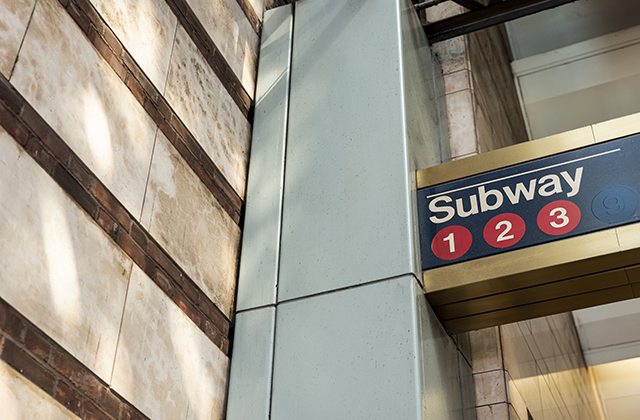In today’s digital landscape, effective SEO and marketing strategies are crucial for any business, and auto parts retailers are no exception. With the rise of e-commerce and the shift in consumer behavior towards online shopping, it is more important than ever to optimize your online presence. This article will guide you through six essential SEO tips and marketing strategies to help drive traffic and sales to your auto parts business. By following these tips, you can ensure that your business stands out in a competitive market and attracts a steady stream of customers.
1. Optimize Your Website for Search Engines
The first step in any successful SEO strategy is to ensure that your website is optimized for search engines. This involves a range of tactics, including keyword research, on-page optimization, and technical SEO.
Keyword Research: Start by identifying the keywords and phrases that potential customers are using to search for auto parts. Tools like Google Keyword Planner, SEMrush, and Ahrefs can help you find relevant keywords with high search volumes and low competition.
On-Page Optimization: Once you have your keywords, incorporate them naturally into your website’s content, including titles, headings, meta descriptions, and body text. Ensure that your content is high-quality, informative, and relevant to your audience. Additionally, make sure that your images have alt text that includes your keywords, as this can help improve your search engine rankings.
Technical SEO: Technical SEO involves optimizing the backend of your website to improve its performance and ensure that search engines can easily crawl and index your pages. This includes ensuring that your site is mobile-friendly, has a fast loading speed, and uses a secure HTTPS connection. Regularly audit your website for broken links and fix any errors that could negatively impact your SEO.
2. Create High-Quality Content
Content is king in the world of SEO. Creating high-quality, informative content that is relevant to your audience can help improve your search engine rankings and drive traffic to your site.
Blogging: Start a blog on your website and regularly publish articles related to the auto parts industry. This could include how-to guides, product reviews, industry news, and maintenance tips. Blogging not only helps with SEO by providing fresh content for search engines to index, but it also establishes your business as an authority in the industry and provides value to your customers.
Video Content: Video content is becoming increasingly popular and can be a powerful tool for engaging your audience. Consider creating video tutorials, product demonstrations, and customer testimonials. Optimize your videos by including relevant keywords in the title, description, and tags, and host them on platforms like YouTube to reach a wider audience.
User-Generated Content: Encourage your customers to create content related to your products, such as reviews, testimonials, and social media posts. User-generated content not only provides social proof but also helps improve your SEO by increasing the amount of relevant content associated with your brand.
3. Leverage Local SEO
For auto parts retailers with a physical store, local SEO is crucial for attracting customers in your area. Local SEO involves optimizing your online presence to appear in local search results and attract nearby customers.
Google My Business: Claim and optimize your Google My Business listing. Ensure that your business information is accurate and complete, including your address, phone number, business hours, and website URL. Encourage your customers to leave reviews, as positive reviews can improve your local search rankings.
Local Citations: Ensure that your business is listed in local directories and citation sites, such as Yelp, Yellow Pages, and industry-specific directories. Consistent and accurate information across these listings can help improve your local SEO.
Local Keywords: Incorporate local keywords into your website’s content, such as the name of your city or neighborhood. For example, if your business is located in the Northern Beaches area, you could use keywords like “auto parts in Northern Beaches” or “Northern Beaches auto parts store.” An SEO consultant in Northern Beaches can provide valuable insights and strategies to help you optimize your local SEO efforts.
4. Utilize Social Media Marketing
Social media is a powerful tool for connecting with your audience and driving traffic to your website. By leveraging social media marketing, you can increase brand awareness, engage with your customers, and promote your products.
Choose the Right Platforms: Focus on the social media platforms that are most popular with your target audience. For auto parts retailers, platforms like Facebook, Instagram, and YouTube can be particularly effective.
Create Engaging Content: Share a mix of content, including product photos, behind-the-scenes videos, customer testimonials, and industry news. Use eye-catching visuals and engaging captions to capture your audience’s attention.
Interact with Your Audience: Respond to comments and messages promptly, and engage with your followers by asking questions and encouraging them to share their own content. Building a strong community on social media can help increase customer loyalty and drive sales.
5. Invest in Paid Advertising
While SEO is a long-term strategy, paid advertising can provide immediate results by driving targeted traffic to your website. There are several types of paid advertising that can be effective for auto parts retailers.
Google Ads: Google Ads allows you to create targeted ads that appear in search engine results when users search for relevant keywords. By bidding on keywords related to your products, you can drive high-quality traffic to your website.
Social Media Ads: Platforms like Facebook and Instagram offer powerful advertising tools that allow you to target specific demographics, interests, and behaviors. Create compelling ads that showcase your products and include a clear call-to-action to encourage users to visit your website.
Retargeting: Retargeting ads are a great way to re-engage users who have previously visited your website but did not make a purchase. By showing them targeted ads as they browse other websites or social media platforms, you can remind them of your products and encourage them to return to your site and complete their purchase.
6. Analyze and Adjust Your Strategies
Finally, it’s important to regularly analyze the performance of your SEO and marketing strategies and make adjustments as needed. By monitoring your analytics, you can identify what’s working and what’s not, and make data-driven decisions to improve your results.
Google Analytics: Use Google Analytics to track your website’s traffic, user behavior, and conversion rates. This tool provides valuable insights into how users are finding and interacting with your site, allowing you to identify areas for improvement.
SEO Tools: Tools like SEMrush, Ahrefs, and Moz can help you monitor your search engine rankings, track your backlinks, and conduct keyword research. Use these tools to identify opportunities for improving your SEO and staying ahead of your competitors.
A/B Testing: Conduct A/B testing on your website and advertising campaigns to determine which strategies are most effective. Test different headlines, images, calls-to-action, and other elements to see what resonates best with your audience.
By following these six essential SEO tips and marketing strategies, you can drive traffic and sales to your auto parts business and stay ahead of the competition. Whether you’re just starting out or looking to improve your existing efforts, these tips can help you build a strong online presence and attract a steady stream of customers. Remember that SEO and marketing are ongoing processes, so continue to analyze your performance and make adjustments as needed to ensure long-term success.

